Adverse cardiac remodelling in spontaneously hypertensive rats: acceleration by high aerobic exercise intensity
- PMID: 22930266
- PMCID: PMC3515826
- DOI: 10.1113/jphysiol.2012.241141
Adverse cardiac remodelling in spontaneously hypertensive rats: acceleration by high aerobic exercise intensity
Abstract
In the present study it was hypothesized that voluntary aerobic exercise favours a pro-fibrotic phenotype and promotes adverse remodelling in hearts from spontaneously hypertensive rats (SHRs) in an angiotensin II-dependent manner. To test this, female SHRs at the age of 1 year were started to perform free running wheel exercise. Captopril was used to inhibit the renin-angiotensin system (RAS). Normotensive rats and SHRs kept in regular cages were used as sedentary controls. Training intensity, expressed as mean running velocity, was positively correlated with the left ventricular mRNA expression of TGF-β(1), collagen-III and biglycan but negatively correlated with the ratio of sarcoplasmic reticulum Ca(2+)-ATPase (SERCA)2a to Na(+)-Ca(2+) exchanger (NCX). A pro-fibrotic phenotype was verified by Picrosirius red staining. Sixty-seven per cent of SHRs performing free running wheel exercise died either spontaneously or had to be killed during a 6 month follow-up. In the presence of captopril, aerobic exercise did not show a similar positive correlation between training intensity and the expression of fibrotic markers. Moreover, in SHRs receiving captopril and performing free running wheel exercise, a training intensity-dependent reverse remodelling of the SERCA2a-to-NCX ratio was observed. None of these rats died spontaneously or had to be killed. In captopril-treated SHRs performing exercise, expression of mRNA for decorin, a natural inhibitor of TGF-β(1), was up-regulated. Despite these differences between SHR-training groups with and without captopril, positive training effects (lower resting heart rate and no progression of hypertension) were found in both groups. In conclusion, high aerobic exercise induces an angiotensin II-dependent adverse remodelling in chronic pressure overloaded hearts. However, high physical activity can potentially induce reverse remodelling in the presence of RAS inhibition.
Figures
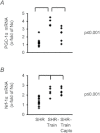
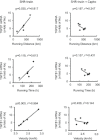
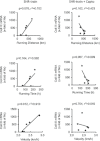

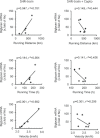
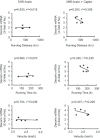
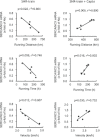
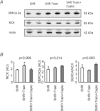
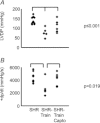
Comment in
-
Exercise, load and remodelling: do we know what we think we know?J Physiol. 2013 Apr 15;591(8):2025-6. doi: 10.1113/jphysiol.2012.249466. J Physiol. 2013. PMID: 23588501 Free PMC article. No abstract available.
-
Is exercise really deleterious for the hypertensive heart?J Physiol. 2013 Apr 15;591(8):2225-6. doi: 10.1113/jphysiol.2012.249094. J Physiol. 2013. PMID: 23588504 Free PMC article. No abstract available.
-
Reply from Klaus-Dieter Schluter and Rolf Schreckenberg.J Physiol. 2013 Apr 15;591(8):2227-8. doi: 10.1113/jphysiol.2013.251280. J Physiol. 2013. PMID: 23588505 Free PMC article. No abstract available.
References
-
- Amaral SL, Zorn TMT, Michelini LC. Exercise training normalizes wall-to-lumen ratio of the gracilis muscle arterioles and reduces pressure in spontaneously hypertensive rats. J Hypertens. 2000;18:1563–1572. - PubMed
-
- Anwar A, Taimor G, Korkusuz H, Schreckenberg R, Berndt T, Abdallah Y, Piper HM, Schlüter K-D. PKC-dependent signal transduction pathways increase SERCA2a expression in adult rat cardiomyocytes. J Mol Cell Cardiol. 2005;39:911–919. - PubMed
-
- Anwar A, Schlüter K-D, Heger J, Piper HM, Euler G. Enhanced SERCA2a expression improves contractile performance of ventricular cardiomyocytes of rat under adrenergic stimulation. Pflugers Arch. 2008;457:485–491. - PubMed
-
- Bereczki E, Gonda S, Csont T, Korpos E, Zvara A, Ferdinandy P, Santha M. Overexpression of biglycan in the heart of transgenic mice: An antibody microarray study. J Proteom Res. 2007;6:854–861. - PubMed
-
- Bers DM. Calcium flux involved in control of cardiac myocyte contraction. Circ Res. 2000;87:275–281. - PubMed
Publication types
MeSH terms
Substances
LinkOut - more resources
Full Text Sources
Other Literature Sources
Medical
Miscellaneous

